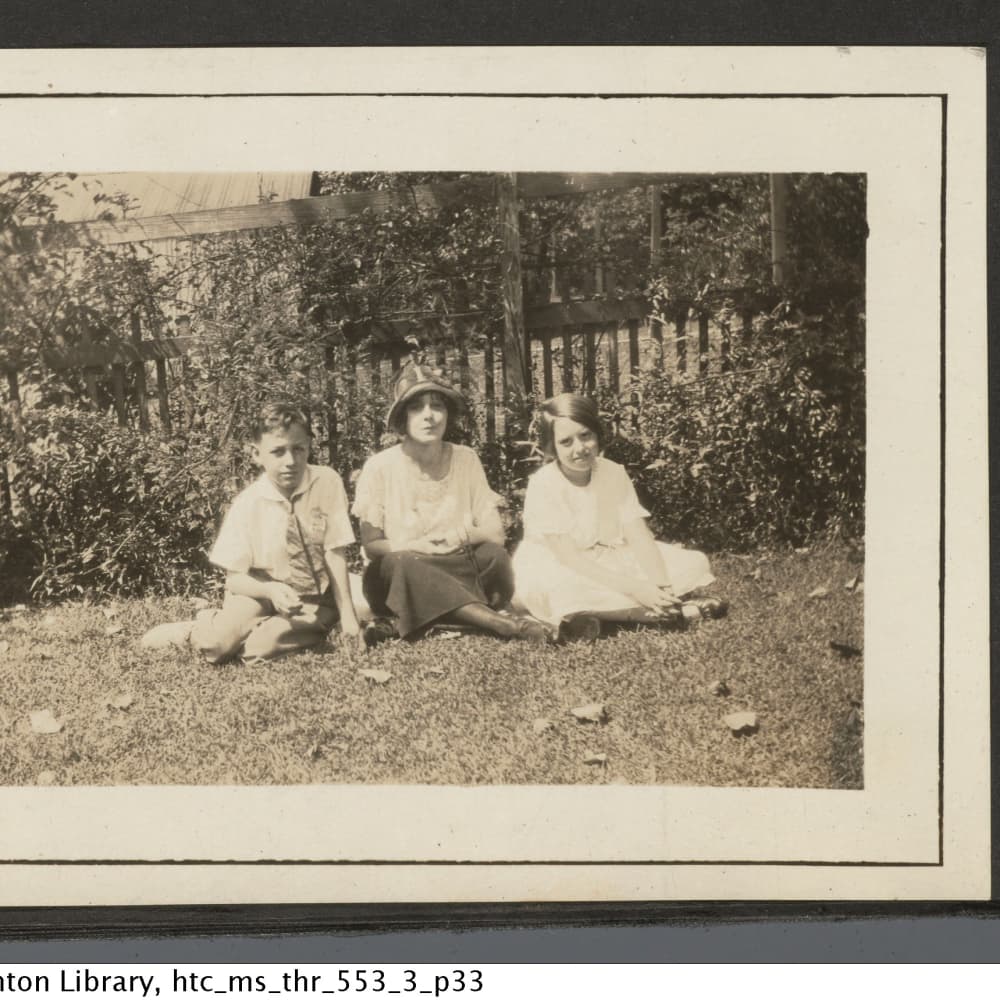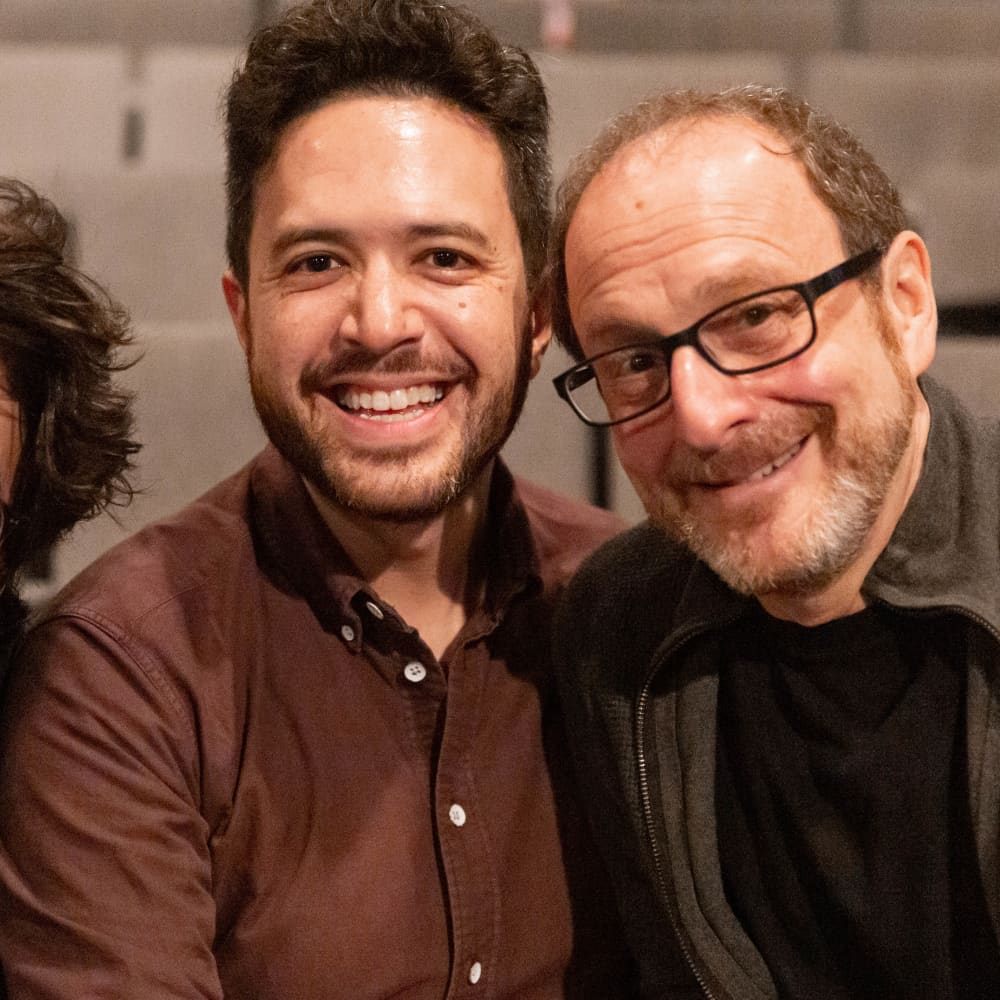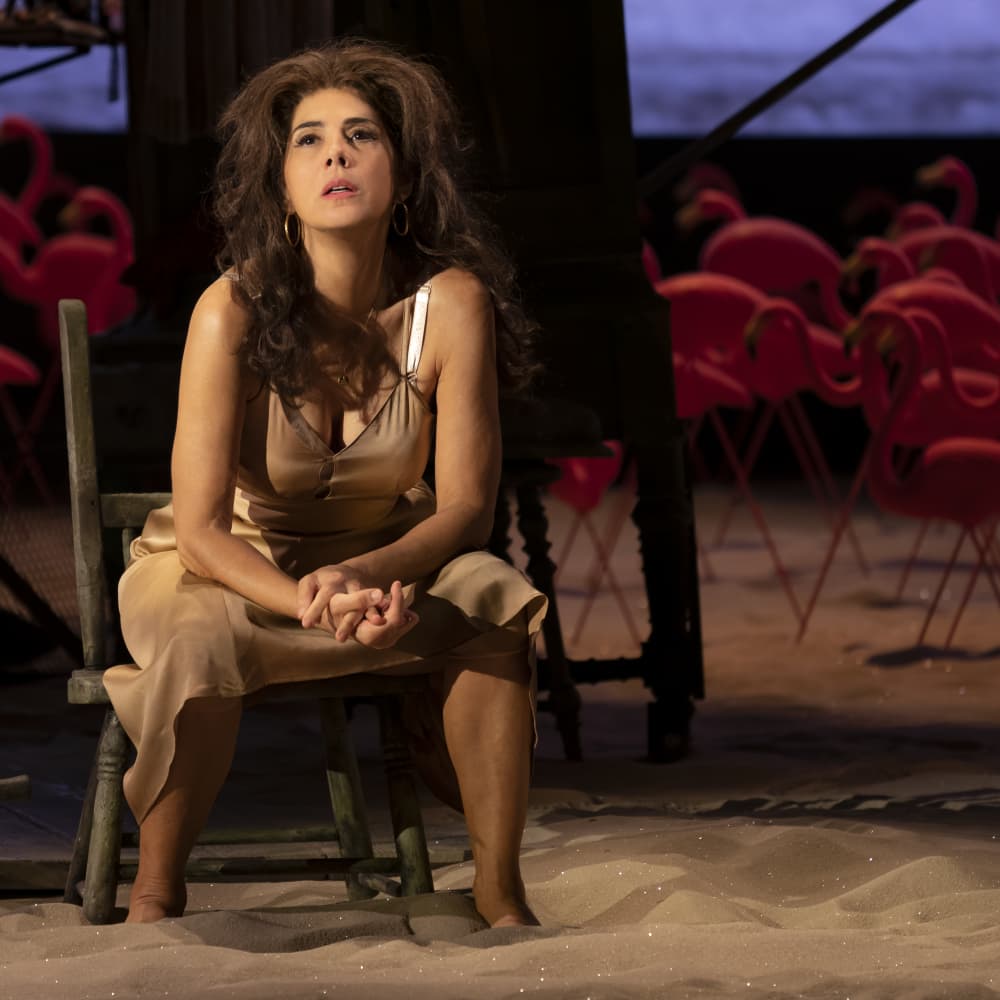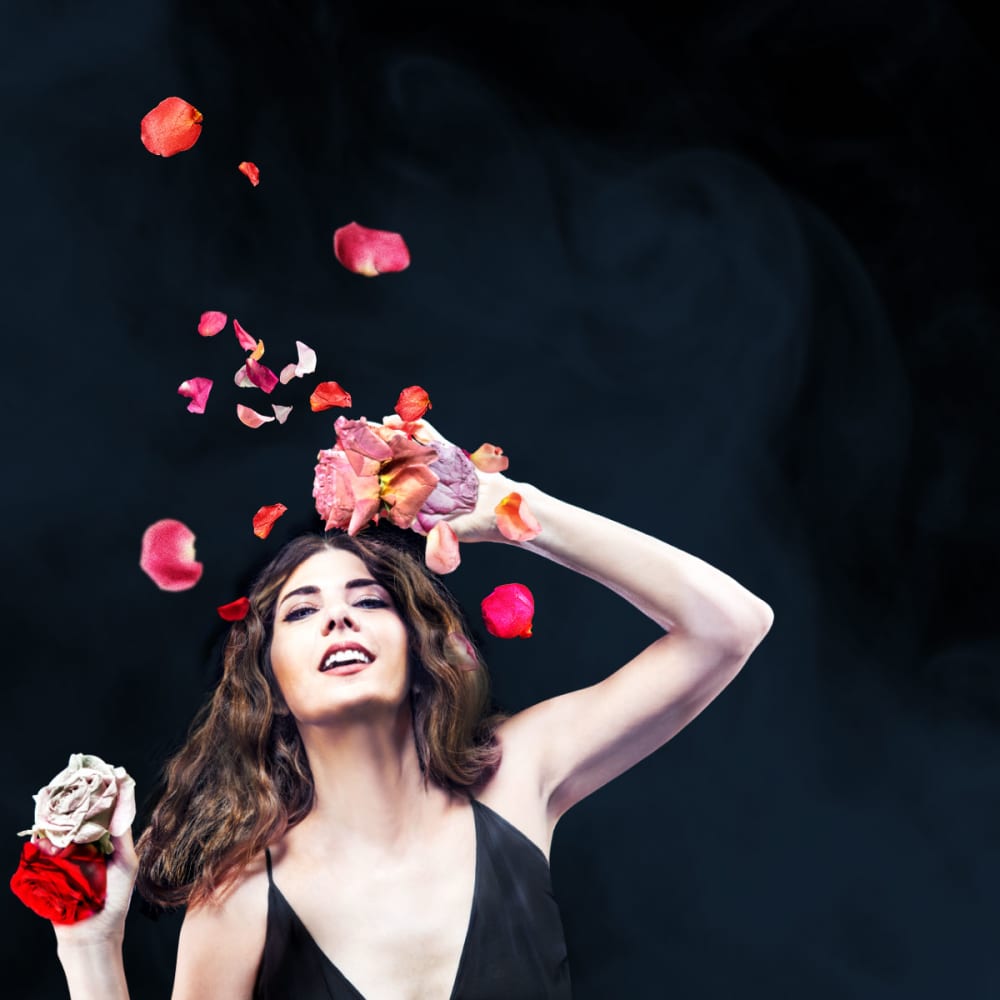The Rose Tattoo:
Design Statements
Posted on: December 4, 2019
Mark Wendland, Set Design
“The Rose Tattoo is the Dionysian element in human life, its mystery, its beauty, its significance.”
— Tennessee Williams
On the heels of his huge success on Broadway with A Streetcar Named Desire, the thirty-six-year-old Williams fell in love with Frank Merlo, a twenty-five-year-old Sicilian American. They spent the following year together on the coast of Italy. Williams later said of Frank, “He was so close to life, he tied me down to earth.” Within two years, Williams wrote The Rose Tattoo. The dedication: “To Frank in return for Sicily.” In his Memoirs, Williams called The Rose Tattoo his “love play to the world.” Williams worked his whole life to disturb the status quo. He wanted to push his art beyond the expected in an effort to get to something greater: Greater truths about the human condition...greater connection to the human spirit! He pushed himself to rethink what the theatrical event could be, even to the point of who could be the heroine of a work of drama! If we are to honor that spirit, Theatre Artists must work to meet Williams in that space between what we think we know and what we dream — all to create “a true celebration of the inebriate god!”
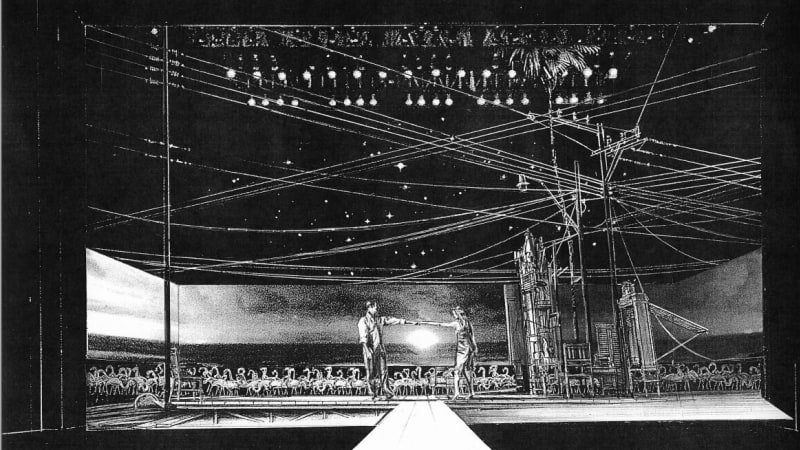
Design Sketch by Mark Wendland
“The world is violent and mercurial — it will have its way with you. We are saved only by love — love for each other and the love that we pour into the art we feel compelled to share: being a parent; being a writer; being a painter; being a friend. We live in a perpetually burning building, and what we must save from it, all the time, is love.”
— Tennessee Williams
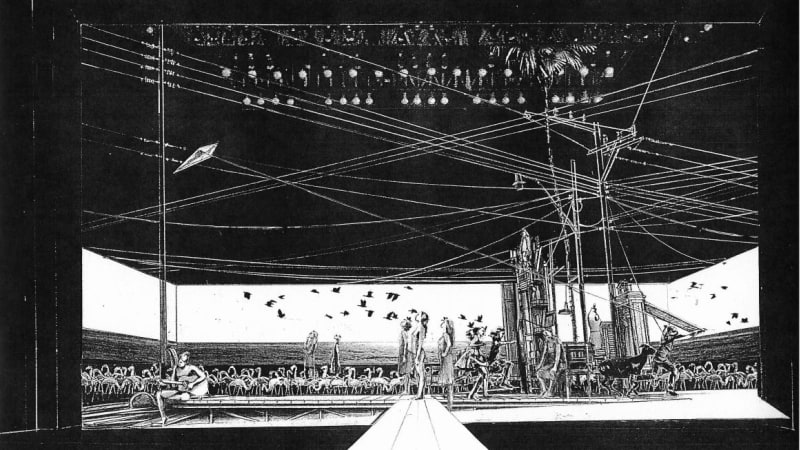
Design Sketch by Mark Wendland
“I prefer a play to be not a noose but a net with fairly wide meshes. So many of its instance of revelations are wayward flashes, not part of the plan of the author but accidentally struck off, and perhaps these are closest to being a true celebration of the inebriate god.”
— Tennessee Williams
Clint Ramos, Costume Design
The costume design for The Rose Tattoo is based on this idea of otherness. It is centered around this immigrant woman who, through tragic loss, is navigating her way through the impending tidal wave of uncertainty. Historically we are in the early ’50s, by the sea in Louisiana. Emotionally, we are in Serafina’s heart and mind as she bumps against the box that society has placed her in.
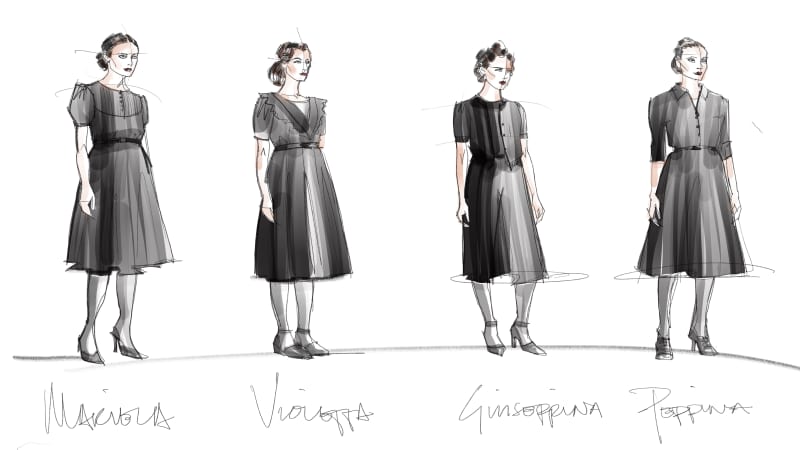
Costume Sketches by Clint Ramos
The characters that Williams parades in and out of Serafina’s house are very diverse, and their costumes reflect that range. The clothes are rooted in reality, but absurdity seeps in when we factor in faith, desire, and sometimes, madness.
A large part of what is exciting for me is a central character who makes clothes. Exploring how Serafina appears and how she dresses herself versus the appearance of the characters for whom she makes clothes is how we create tension in the design.

Costume Sketches by Clint Ramos
Also, because Serafina is, in essence, an outsider — I needed to make sure that we perceive her as a believable human being. Her clothes must render her in a real manner and sometimes that means choosing the simpler options that the period offers. Modulating her appearance so we don’t lose her otherness but also bridging her to the audience’s realm of understanding is of utmost importance.
Ultimately, The Rose Tattoo is about humanity, acceptance, and love — and the lengths we go to to deny ourselves those. It is about the theatre of appearance and what we look like when we unmask ourselves.
Ben Stanton, Lighting Design
Passion and superstition surround Tennessee Williams’s beautiful and funny play The Rose Tattoo. In approaching the design for this piece, we have tried to build a world filled with mystery, emotional tension, and potential. A close-knit environment that has boundaries but also allows for new opportunity to walk right through the front door.
Our set designer Mark Wendland has done a magnificent job of honoring the many demands of this text — giving us an interior space that showcases Serafina’s eclectic nature and an exterior world that gives us clues about the time and place in which this story takes place. Surrounding all of this, Mark has designed huge, panoramic projection surfaces on which our projection designer Lucy Mackinnon tells us a story of a seaside town with never-ending sunsets, and waves that are both comforting and an uneasy reminder of time passing and youth slipping away.
Our protagonist is both terrified of and driven by her passion, and this idea helped me find the vocabulary for the lighting design. I try to create mystery through shadows and moments of darkness, while also maintaining a slightly surreal nostalgic beauty to the world around them. I want to help the audience feel the intensity of the fear and longing at the heart of this play. Serafina is a force of nature, at once cautious and wild, superstitious and a rebel. She wants something to come through that door but is terrified of what that will be.
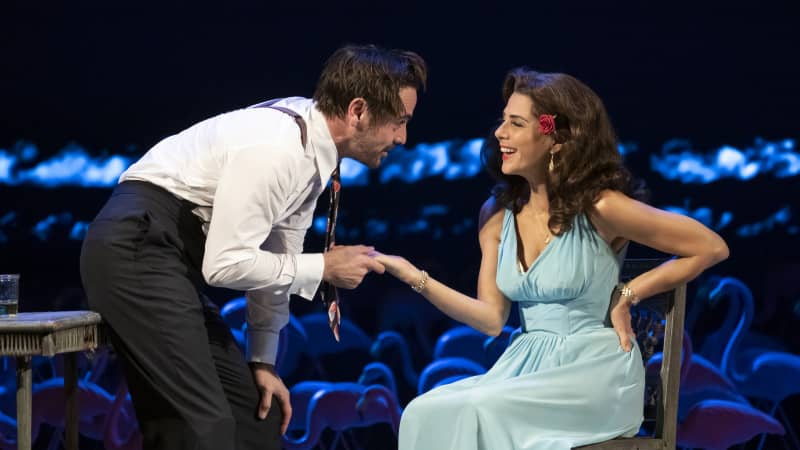
Emun Elliott and Marisa Tomei
© Joan MarcusLucy Mackinnon, Projection Design
The video design of The Rose Tattoo is intentionally simple. I have filled three video screens with images of the ocean. The screens are massive and monolithic, like the ocean itself. Hanging inside and as backdrop to Mark Wendland’s otherwise delicate, earthy, off-kilter set, they reflect the contrast between the chaotic and unbalanced inner life of the show’s main character, Serafina, and the stable, comparatively simple and beautiful world around her. At the same time, the video reflects Serafina with its extreme romanticism, saturated colors, and essential beauty.
Fitz Patton, Sound Design
The Rose Tattoo is a landscape of the human soul played out on the border between land and sea in which love, loss, age, and youth find transformation against a backdrop of blazing sunlight. Its reckless passion and old-world feel for the beyond that binds the young and old is best expanded in music. The play lays the foundation. The composer stands there and lifts these improbably powerful poles of life into the air to be heard another way, through music. There is no way to do more or to be more than the play itself, so the composer is free to fly as high as he can, to find in the poetic light of music that which can’t be expressed in any other way but which must be expressed.




